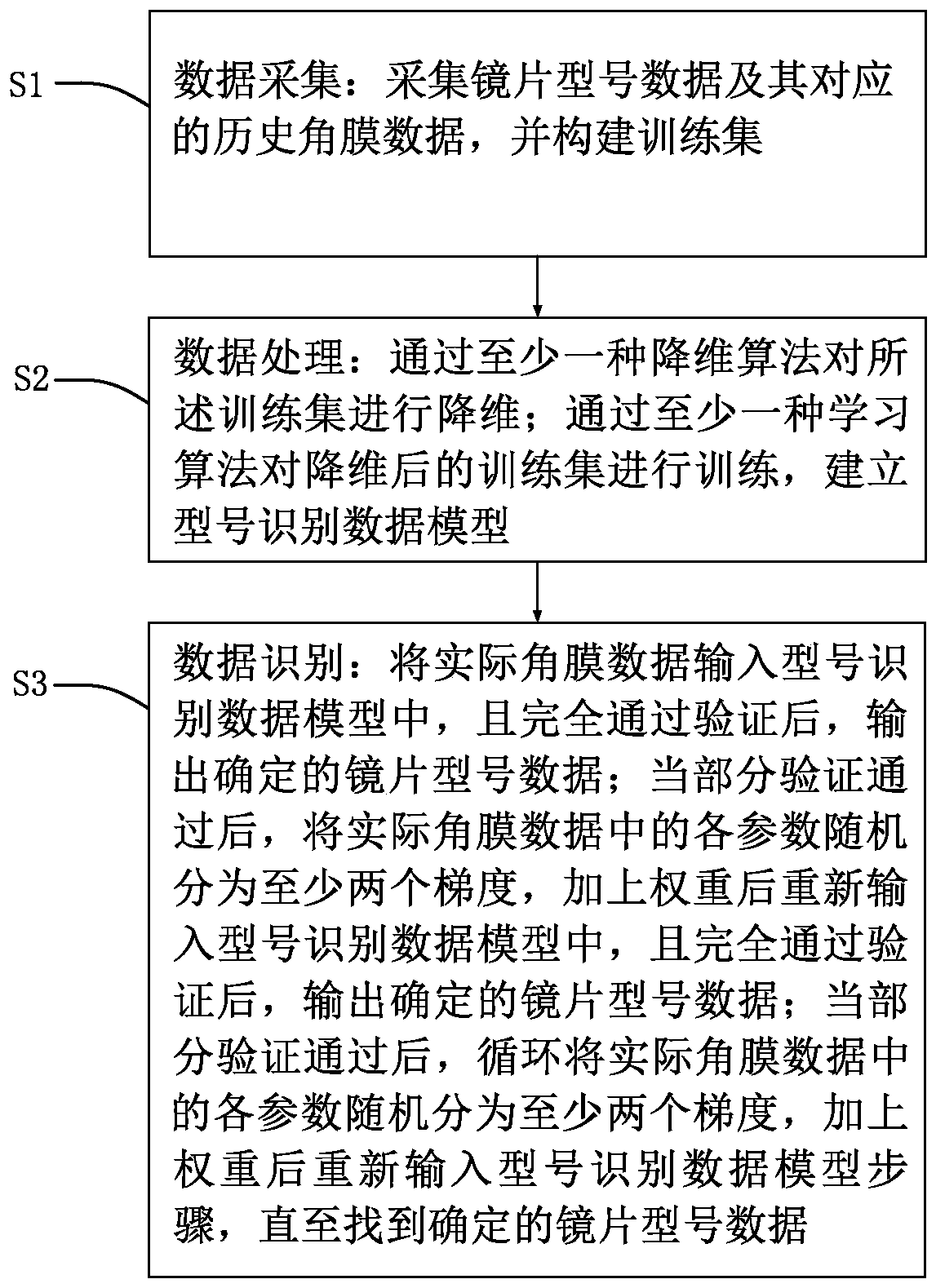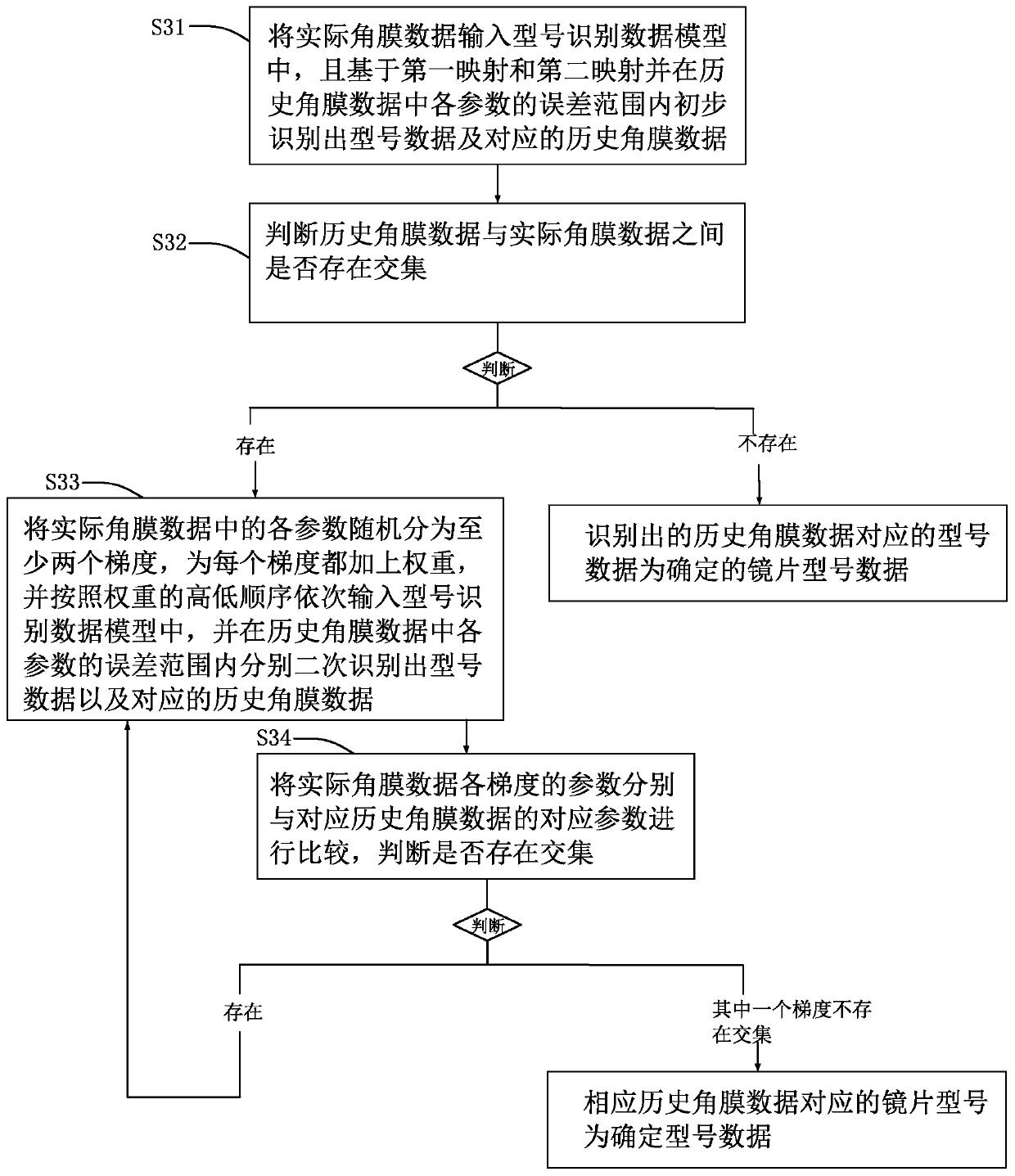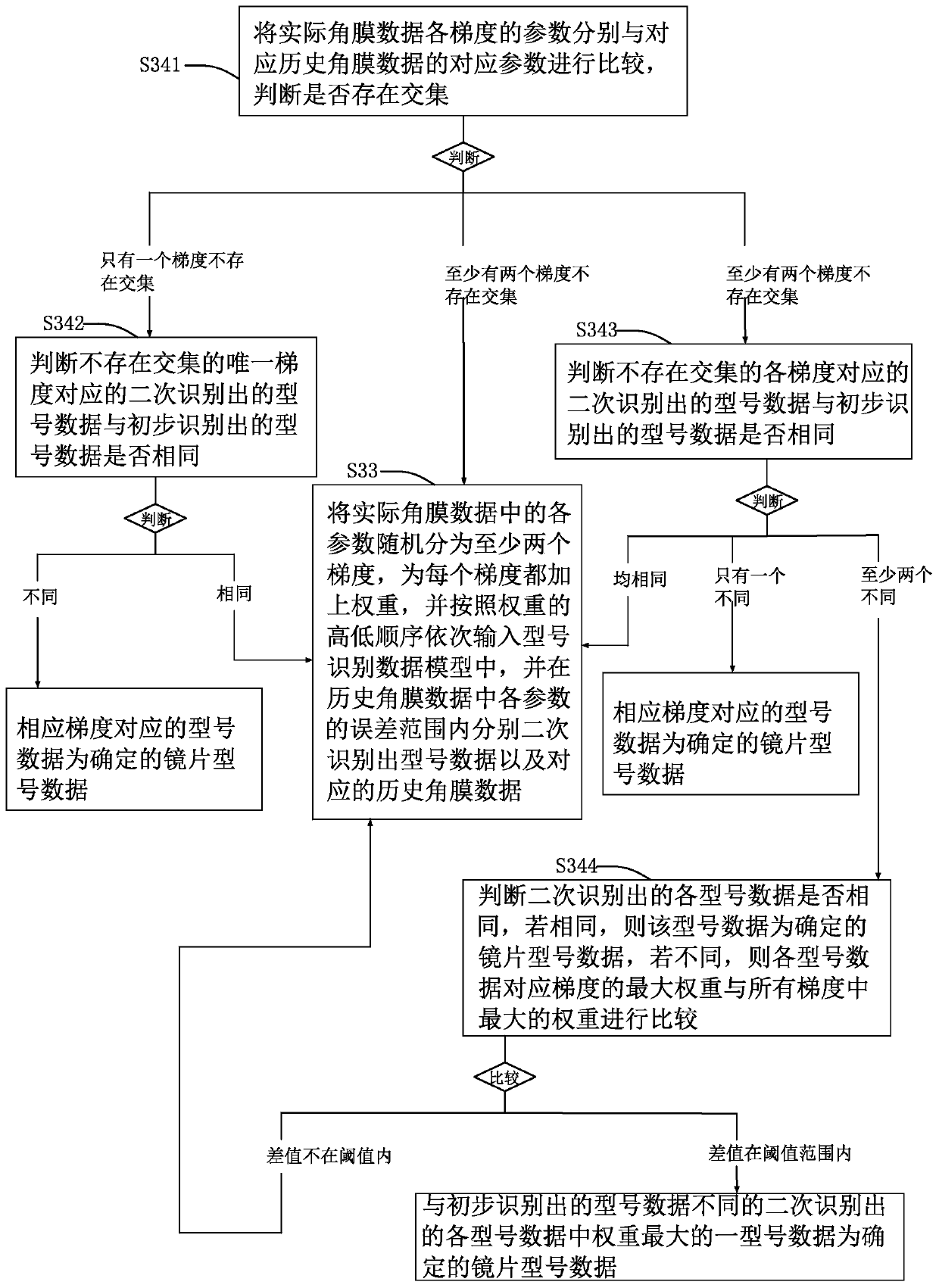Intelligent orthokeratology lens selection system and method based on big data and deep learning
An orthokeratology lens and deep learning technology, applied in neural learning methods, optics, optical components, etc., can solve problems affecting user experience, cross infection, corneal epithelial damage, etc.
- Summary
- Abstract
- Description
- Claims
- Application Information
AI Technical Summary
Problems solved by technology
Method used
Image
Examples
Embodiment 1
[0032] The present invention provides an intelligent orthokeratology lens selection method based on big data and deep learning, such as figure 1 shown, including the following steps:
[0033] S1: Data collection:
[0034] Collecting lens model data and its corresponding historical corneal data, and constructing a training set, the lens model data including lens brand and corresponding lens parameters;
[0035] S2: Data processing:
[0036] performing dimensionality reduction on the training set by at least one dimensionality reduction algorithm, the dimensionality reduction algorithm including but not limited to PCA theory;
[0037] The training set after dimensionality reduction is trained by at least one learning algorithm to establish a model recognition data model. The algorithm includes but is not limited to known machine learning algorithms, such as neural network algorithms, Markov algorithms, etc., and neural Convolutional neural network algorithm in network algorit...
Embodiment 2
[0061] An intelligent orthokeratology lens selection method based on big data and deep learning is different from Embodiment 1 in that, as shown in Figure 5, the selection method also includes the following steps:
[0062] S4: Simulation prediction:
[0063] Part of the training set after dimension reduction is performed by at least one learning algorithm, a prediction model is established, the identified lens model data and actual cornea data are input into the prediction model, and the predicted corrected cornea data is output, wherein the historical cornea The data also includes corrected corneal data after the patient wears orthokeratology lenses, and the corrected corneal data includes corrected corneal e value, corrected corneal k value, corrected corneal Sag value, corrected corneal diameter, corrected corneal thickness, corrected hyperopia or myopia degree, To correct one or more of the astigmatism degrees, the algorithm includes but is not limited to known machine lea...
Embodiment 3
[0066] An intelligent orthokeratology lens selection system based on big data and deep learning, such as Image 6 As shown, including the following parts:
[0067] Data collection module 1, is used for collecting lens model data and its corresponding historical corneal data, and constructs training set, and described lens model data comprises lens brand and corresponding lens parameter;
[0068] The data processing module 2 is used to reduce the dimensionality of the training set by at least one dimensionality reduction algorithm, and train the dimensionality-reduced training set by at least one learning algorithm to establish a model identification data model;
[0069] The data identification module 3 is used to input the actual cornea data into the model identification data model, and after the verification is completely passed, output the determined lens model data; when part of the verification is passed, each parameter in the actual cornea data is randomly divided into at...
PUM
 Login to View More
Login to View More Abstract
Description
Claims
Application Information
 Login to View More
Login to View More - R&D
- Intellectual Property
- Life Sciences
- Materials
- Tech Scout
- Unparalleled Data Quality
- Higher Quality Content
- 60% Fewer Hallucinations
Browse by: Latest US Patents, China's latest patents, Technical Efficacy Thesaurus, Application Domain, Technology Topic, Popular Technical Reports.
© 2025 PatSnap. All rights reserved.Legal|Privacy policy|Modern Slavery Act Transparency Statement|Sitemap|About US| Contact US: help@patsnap.com



